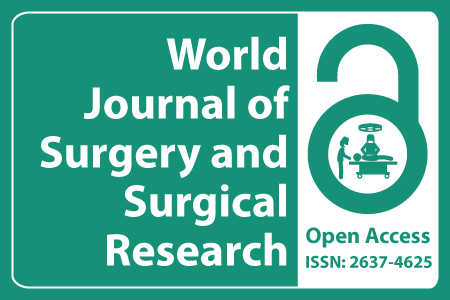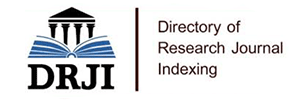
Journal Basic Info
- Impact Factor: 1.989**
- H-Index: 6
- ISSN: 2637-4625
- DOI: 10.25107/2637-4625
Major Scope
- Colorectal Surgery
- Cancer Surgery
- Laparoscopic Surgery
- Hepatology
- Orthopaedic Surgery
- Surgical Procedures
- Neurological Surgery
- Cardiothoracic Surgery
Abstract
Citation: World J Surg Surg Res. 2020;3(1):1207.DOI: 10.25107/2637-4625.1207
Urgent Peripheral ECLS as a Rescue in Refractory Cardiogenic Shock
Prashant N Mohite*, Rita Fernandez Garda, Mubassher Husain, Abu Farmidi, Kabeer Umakumar, Dhruva Dhar, Anand Jothidasan, Maria Monteagudo Vela, Raj Binu and Andre Simon
Department of Cardiothoracic Transplantation and Mechanical Support, Royal Brompton and Harefield NHS Foundation Trust, UK
*Correspondance to: Prashant N Mohite
PDF Full Text Research Article | Open Access
Abstract:
Background: Despite vast development in the diagnosis and management of shock, cardiogenic
shock, a condition with inadequate blood circulation due to primary heart failure, remains a clinical
challenge with high mortality. Extracorporeal Life Support (ECLS), although considered a last resort
in the management of cardiogenic shock, is being used increasingly.
Methods: A retrospective study of patients with refractory cardiogenic shock requiring ECLS was
performed. All patients were evaluated by our multi-disciplinary team for suitability as candidates
for ECLS. A peripheral veno-arterial ECMO was implanted using a CentriMag® (Thoratec) pump
head and Medos hilite® 7000LT oxygenator as a standard set. Outcomes in patients were analyzed
based on the aetiology of cardiogenic shock, viz. acute Decompensated Heart Failure (DHF), Post-
Cardiotomy Cardiogenic Shock (PCCS), Post-Primary Coronary Intervention (PCI).
Results: 33 patients (7 females) with a mean age of 47 (range: 18 to 83) years, required the ECLS for
the refractory cardiogenic shock of various aetiologies; DHF=14, PCCS=11, PCI=8. In DHF group
2 patients died on ECLS, 5 were weaned and 7 were bridged to ventricular assist device. 9 (62%)
patients could be discharged home and survived for more than 1 year of ECLS explantation. In the
PCCS group, 6 patients died on ECLS, 3 were weaned and 2 were bridged to ventricular assist device.
4 (36%) patients could be discharged home and survived for more than 1 year of ECLS explantation.
In the PCI group, 4 patients died on ECLS and 4 were weaned; however, only 1 (13%) patient could
be discharged home and survived for more than 1 year of ECLS explantation.
Conclusion: ECLS is a rescue in the management of patients with cardiogenic shock. Outcomes of
the ECLS for refractory cardiogenic shock due to DHF and PCCS are encouraging; however, they
remain poor in the PCI patients mainly due to the majority of patients in that group being eCPR and
with high SOFA and APACHE II scores. The use of ECLS must be decided depending on individual
risk factors.
Keywords:
Extracorporeal life support; Extracorporeal membrane oxygenator; Refractory cardiogenic shock
Cite the Article:
Mohite PN, Garda RF, Husain M, Farmidi A, Umakumar K, Dhar D, et al. Urgent Peripheral ECLS as a Rescue in Refractory Cardiogenic Shock. World J Surg Surgical Res. 2020; 3: 1207..













